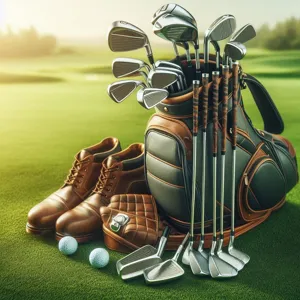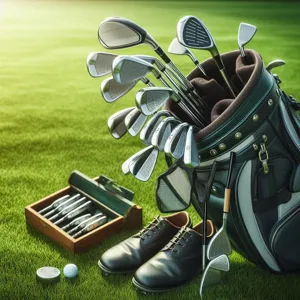For many, the thrill of riding a motorbike extends beyond the roar of the engine and the rush of wind against their skin; it’s about the connections forged on the open road.
Joining a motorbike club is not just an invitation to explore scenic routes and share exhilarating rides; it’s a gateway to a vibrant community where camaraderie, support, and shared passions flourish. Whether you’re a seasoned rider or a newcomer to the biker world, the benefits of being part of a motorbike club can be profound and surprising. From building lifelong friendships and gaining valuable riding skills to discovering new adventures and giving back to your community, the experience of club membership can enrich your life in ways you never expected. In this blog post, we’ll delve into the many advantages of joining a motorbike club and why it might just be the best decision you make for both your riding journey and your social life. So, rev your engines, and let’s explore the thrilling world of motorbike camaraderie!
1. Introduction: The Thrill of the Ride

The thrill of the ride is a feeling that resonates deep within the hearts of motorbike enthusiasts. There’s something exhilarating about the roar of an engine, the rush of wind against your face, and the freedom of the open road stretching endlessly before you. Whether you’re a seasoned rider or a newcomer to the world of motorcycling, the experience of navigating winding roads, exploring scenic landscapes, and feeling the adrenaline surge as you accelerate can be nothing short of transformative.
But beyond the sheer excitement of riding lies a deeper connection—a bond formed not only with your machine but also with fellow riders who share your passion. This is where the magic of joining a motorbike club comes into play. Imagine being part of a community that fully understands the highs and lows of motorcycling, where stories are exchanged over campfires, and lifelong friendships are forged on long journeys.
In this blog post, we will explore the surprising benefits of becoming a member of a motorbike club. From expanding your riding skills to embracing camaraderie, the club experience enhances every ride, making it not just about the destination, but about the connections you build along the way. Buckle up your helmets and rev up your engines as we dive into the incredible world that awaits you within the folds of a motorbike club.
2. What is a Motorbike Club?
A motorbike club is more than just a gathering of enthusiasts; it’s a vibrant community that celebrates the thrill of riding and the camaraderie that comes with it. At its core, a motorbike club is an organized group of individuals who share a passion for motorcycles, whether they prefer cruising on the open road, tackling rugged trails, or customizing their bikes to perfection. These clubs can vary significantly in terms of structure, size, and focus, ranging from informal groups of friends who ride together occasionally to large, well-established organizations with chapters spanning across regions.
Members of a motorbike club often come together to share their knowledge, skills, and experiences, fostering a spirit of friendship and support. They organize regular rides, events, and meet-ups, providing a platform for bikers to connect with like-minded individuals who understand the unique joys and challenges of motorcycling. Many clubs also emphasize the importance of safety and maintenance, offering workshops and training sessions that can enhance both riding skills and bike care.
Moreover, motorbike clubs often promote a strong sense of belonging. For many riders, the club becomes a second family, where lasting friendships are forged over shared adventures and a mutual love for the ride. The bonds formed within these communities can lead to unforgettable experiences, from epic weekend trips to charity events and rallies that unite bikers for a common cause.
In essence, joining a motorbike club opens the door to a world of exhilarating experiences, valuable connections, and a deeper appreciation for the art of motorcycling, all while riding alongside fellow enthusiasts who share your passion. Whether you’re a seasoned rider or a newcomer eager to learn, a motorbike club can enhance your journey and rev up your love for the road.
3. The Sense of Community in Motorbike Clubs

One of the most compelling aspects of joining a motorbike club is the profound sense of community that comes with it. Imagine rolling into a parking lot filled with fellow riders, their bikes gleaming in the sunlight, and the air buzzing with shared excitement. It’s a unique atmosphere where the roar of engines is harmonized by laughter, stories, and the camaraderie that only comes from a shared passion for riding.
In a motorbike club, you’re not just a lone rider; you become part of a family that understands the thrill of the open road. Whether you’re a seasoned veteran or a newcomer still finding your wheels, the club welcomes you with open arms. Members often share tips on maintenance, riding techniques, and recommend the best local routes, fostering a spirit of mentorship that helps everyone grow as riders.
Beyond the technical know-how, the emotional support within these communities is invaluable. Riders bond over their experiences—be it the exhilaration of a long-distance ride, the challenges of difficult weather, or the thrill of conquering a tough trail. These shared experiences create lasting friendships that extend beyond the bike. Many clubs also organize social events, charity rides, and community service projects, further strengthening the ties among members and providing a sense of purpose.
In an increasingly disconnected world, the sense of belonging to a motorbike club can be a refreshing antidote. It’s not just about the bikes; it’s about the people—friends who share your love for the ride and who are there to cheer you on, lend a hand, or simply enjoy the journey together. So, if you’re looking to rev up your connections, joining a motorbike club might just be the adventure you never knew you needed.
4. Building Lifelong Friendships on Two Wheels
Joining a motorbike club is not just about the thrill of the ride; it’s also an incredible opportunity to forge lifelong friendships with fellow enthusiasts who share your passion for two wheels. The camaraderie that develops within these clubs is unique, often stemming from the shared experiences of hitting the open road, navigating winding trails, and tackling exhilarating adventures together.
Imagine the anticipation of planning a weekend getaway with fellow members, where the roar of engines harmonizes with laughter and storytelling over campfires under a starlit sky. These shared moments foster deep connections, as members bond over their love for bikes, swap stories of past rides, and encourage each other through the ups and downs of motorcycling life. Whether you’re facing mechanical challenges, seeking advice on bike upgrades, or simply sharing a coffee after a long ride, the support and understanding found within a motorbike club can feel like family.
Moreover, the diverse backgrounds of club members enrich the experience even further. You’ll find a mosaic of personalities, from seasoned veterans who have traversed the globe on their bikes to newcomers eager to learn the ropes. This melting pot of experiences and perspectives creates an environment ripe for personal growth and learning, as friendships blossom over shared knowledge and skills.
In addition to the bonds formed during rides, many clubs organize events, community service projects, and social gatherings that strengthen these connections. Whether it’s a charity ride, a bike wash fundraiser, or simply a meet-and-greet at a local diner, these activities further cement relationships and create lasting memories.
So, if you’re looking to rev up your social life while indulging your love for motorbikes, joining a motorbike club might just be the perfect gear shift. As you navigate the twists and turns of life on two wheels, you’ll discover that some of the best friendships are forged in the wind, creating a network of support, adventure, and camaraderie that lasts a lifetime.
5. Skill Development and Riding Safety

Joining a motorbike club is more than just a social endeavor; it’s an opportunity for skill development and enhancing riding safety. In the world of motorcycling, experience is invaluable, and there’s no better way to gain it than by riding alongside seasoned bikers who share their knowledge and expertise. Within the club environment, members often conduct workshops and training sessions focused on various aspects of riding, from basic maintenance to advanced riding techniques.
Imagine participating in a hands-on workshop where you learn to handle your bike in tricky weather conditions, or mastering the art of cornering on twisty roads. These experiences not only help you become a more competent rider but also build your confidence on the road. Many clubs emphasize the importance of safety gear and riding etiquette, ensuring that all members are well-versed in best practices that keep everyone safe during group rides.
Moreover, the camaraderie formed within the club fosters a supportive environment where members can share their experiences and challenges. Whether you’re a beginner or a seasoned rider, the collective wisdom of the club can help you navigate the road ahead with greater assurance. By participating in group rides, you’ll learn to read road conditions better, stay aware of your surroundings, and develop a deeper understanding of your bike’s capabilities.
So, if you’re looking to enhance your riding skills while prioritizing safety, joining a motorbike club could be the perfect pit stop on your journey. Not only will you become a more proficient rider, but you’ll also forge lasting connections with fellow enthusiasts who are just as passionate about the open road as you are.
6. The Adventure of Group Rides and Events
One of the most exhilarating aspects of joining a motorbike club is the adventure of group rides and events. Imagine the rumble of engines harmonizing as a convoy of fellow riders sets out on the open road, each bike a unique expression of its owner, yet united in purpose. The thrill of riding in a pack amplifies the sense of freedom that motorcycling brings. With the wind whipping past you and the sun shining overhead, there’s an unmatched camaraderie that develops among riders as you navigate winding roads, conquer challenging terrains, and share the joy of discovery together.
Group rides often lead to breathtaking destinations—picturesque mountain overlooks, hidden coastal routes, or charming small towns that you might have never explored on your own. These shared experiences create lasting memories, forging friendships that go beyond the rides themselves. Whether it’s stopping for a scenic picnic, capturing the moment with group photos, or swapping stories over a campfire at a bike rally, the bonds formed during these adventures are truly special.
Beyond the thrill of the ride, club events often include organized rallies, charity runs, and bike shows that provide opportunities to connect with a broader community. These gatherings are not just about showcasing your ride; they’re about celebrating a shared passion and supporting causes that matter to you and your fellow members. The spirit of competition can also emerge during fun races or skill challenges, pushing everyone to improve their riding abilities while fostering a sense of healthy rivalry.
Additionally, being part of a motorbike club opens doors to a wealth of knowledge shared among experienced riders. You can learn about everything from bike maintenance tips to safety practices, all while enjoying the company of those who share your enthusiasm. The adventures you embark on together will not only refine your skills as a rider but also enrich your life with exciting stories and lifelong friendships. In essence, the adventure of group rides and events transforms motorcycling from a solitary pastime into a vibrant, communal journey, making every twist and turn on the road an opportunity for connection and discovery.
7. Access to Exclusive Resources and Knowledge

Joining a motorbike club opens the door to a treasure trove of exclusive resources and invaluable knowledge that can significantly enhance your riding experience. Within the community, seasoned riders share their wealth of expertise, offering insights that go beyond the basics of motorcycle maintenance and riding techniques. Imagine having access to workshops and seminars where experts delve into everything from advanced riding skills to the intricacies of motorcycle mechanics.
Members often benefit from discounts on gear, parts, and servicing through partnerships that clubs establish with local dealerships and businesses. This can translate into significant savings, allowing you to invest more in your passion for riding. Additionally, many clubs provide access to private forums or online platforms where you can ask questions, share experiences, and get recommendations tailored to your specific bike and riding style.
Moreover, being part of a motorbike club means you are never alone on your journey. Whether you’re tackling a new route or planning a long-distance trip, you’ll have a network of knowledgeable riders ready to share tips on the best scenic roads, must-visit pit stops, and essential safety precautions. This collective wisdom not only helps you become a better rider but also ensures you make the most of every ride, turning ordinary outings into extraordinary adventures.
In essence, the connections you build within a motorbike club can provide a wealth of support, resources, and knowledge that enrich your riding experience, making it more enjoyable, safer, and fulfilling. So, gear up and get ready to tap into the incredible benefits that come with being part of a passionate community of motorbike enthusiasts!
8. The Mental Health Benefits of Riding with Others
Riding a motorbike can be an exhilarating experience, but when you add the camaraderie of a motorbike club into the mix, the mental health benefits multiply significantly. Engaging with fellow enthusiasts creates a unique sense of belonging that can combat feelings of isolation and loneliness. The shared passion for riding fosters meaningful connections, allowing you to forge friendships with like-minded individuals who understand the thrill and freedom that comes with each ride.
The act of riding itself serves as a powerful stress reliever. The wind rushing past, the roar of the engine, and the rhythm of the open road combine to create an unparalleled sense of freedom and exhilaration. When you ride with others, this experience is amplified; the joy of sharing the journey enhances your mood and can lead to feelings of happiness and euphoria. Group rides provide an opportunity to escape the daily grind, allowing you to immerse yourself in nature and the beauty of the world around you, which can be incredibly therapeutic.
Moreover, motorbike clubs often offer support networks for their members. Whether it’s sharing tips on maintenance, discussing the latest riding gear, or simply being there for one another during tough times, the bonds formed within the club can lead to increased emotional resilience. Many members share not just their love for biking, but also their life experiences, creating a safe space for vulnerability and understanding.
In essence, joining a motorbike club goes beyond just the thrill of riding. It opens doors to new friendships, offers opportunities for personal growth, and provides a supportive community that can significantly enhance your overall mental well-being. So, if you’re looking to rev up your spirits, consider hitting the road with a group of fellow riders and experience the profound impact of shared passion on your mental health.
9. Networking Opportunities within the Motorcycle Community
Joining a motorbike club opens the door to a vibrant world of networking opportunities that extend far beyond just sharing a love for riding. Within the motorcycle community, you’ll find a diverse tapestry of individuals, each bringing unique experiences, skills, and knowledge to the table. Whether you’re a seasoned rider or a newcomer, the connections you make can enhance not only your biking experience but also your personal and professional life.
Imagine attending your club’s weekly meets, where conversations flow as freely as the coffee. Here, you’ll encounter fellow enthusiasts who might just be in the same industry as you or have connections that could further your career. Picture the potential collaborations that could arise from a casual chat about your favorite routes or bike modifications. Members often come from various fields—mechanics, artists, entrepreneurs, and educators—creating a rich environment for exchanging ideas and advice.
Beyond professional networking, motorbike clubs also provide invaluable support systems during events like charity rides or community service projects. Engaging in these activities fosters camaraderie and opens up more avenues for meeting like-minded individuals who share your passion for both riding and making a difference. The friendships formed in this context often lead to lifelong bonds, enriching your social circle in ways you never anticipated.
Additionally, many clubs organize rides and events that attract other motorcycle enthusiasts from around the region or even the country. These gatherings not only allow you to showcase your bike but also offer a chance to meet riders from various backgrounds, expanding your network even further. You might find yourself swapping tips on maintenance, discussing the latest biking gear, or even planning future trips together, all while forging connections that can lead to exciting adventures on and off the road.
In essence, the networking opportunities within the motorcycle community are not just beneficial; they are transformative. By embracing the spirit of camaraderie and connection that comes with being part of a club, you’ll find that the benefits extend far beyond the thrill of the ride—opening doors to new friendships, career opportunities, and unforgettable experiences. So, rev your engines and get ready to connect; the motorcycle community is waiting for you!
10. Supporting Local Charities and Causes
One of the most rewarding aspects of joining a motorbike club is the opportunity to support local charities and causes. While the thrill of the ride and camaraderie among fellow bikers are undeniably appealing, the chance to make a positive impact in your community adds a profound layer of fulfillment to the experience.
Motorbike clubs often organize charity events, fundraisers, and community service projects that bring members together for a common goal: to give back. Whether it’s a charity ride to raise funds for a local hospital, a toy drive during the holidays, or volunteering at a community event, these initiatives not only benefit those in need but also strengthen the bonds among club members.
Imagine cruising down scenic roads with your fellow riders, all while knowing that your passion for biking is contributing to a greater cause. The adrenaline rush of the open road is amplified by the knowledge that each mile you ride could translate into support for a family struggling with medical bills or a child receiving gifts during the holiday season.
Additionally, participating in charitable activities can elevate the reputation of your club within the community. It fosters goodwill and demonstrates that bikers are not just adventurous spirits but also compassionate individuals who care about making a difference. This positive exposure can attract new members who share similar values and want to ride with a purpose.
So, as you consider the advantages of joining a motorbike club, remember that your passion for riding can be a powerful tool for supporting local charities and causes. It’s an opportunity to meet like-minded individuals, forge lasting friendships, and create unforgettable memories—all while making a meaningful difference in the lives of others.
11. Expanding Your Riding Horizons: New Routes and Destinations
One of the most exhilarating aspects of joining a motorbike club is the opportunity to expand your riding horizons, unlocking a treasure trove of new routes and destinations that you might never have discovered on your own. Clubs often organize group rides that take members through breathtaking landscapes, hidden backroads, and iconic highways that are steeped in history and character.
Imagine cruising along winding coastal roads with the ocean breeze in your hair, or carving through the curves of mountainous terrain with fellow enthusiasts who share your passion for the open road. These rides not only offer a chance to experience the thrill of motorcycling in diverse environments, but they also foster camaraderie among members who share tips about the best stops for fuel, food, and scenic viewpoints.
Members of motorbike clubs often have a wealth of knowledge about local and distant routes—secret paths that lead to stunning overlooks, legendary diners, or even remote camping spots that are perfect for a weekend escape. By riding with experienced club members, you can learn about these hidden gems and gain insights into planning your own adventures.
Furthermore, group rides can provide a sense of safety and security as you navigate unfamiliar terrain. Travelling in a pack not only enhances the fun but also ensures that help is readily available should any mechanical issues arise or if someone needs assistance.
In addition to day trips, many clubs also organize longer excursions or weekend getaways, which can serve as the perfect opportunity to explore new states or regions. These trips often become cherished memories, filled with laughter, shared stories around the campfire, and the thrill of new experiences on two wheels.
So, if you’re looking to broaden your riding experience and explore the world beyond your usual routes, joining a motorbike club could be your ticket to adventure. Embrace the call of the open road and get ready to discover new roads, forge new friendships, and create unforgettable memories along the way.
12. The Role of Mentorship in Motorbike Clubs
Mentorship plays a pivotal role in the vibrant ecosystem of motorbike clubs, offering new riders the invaluable chance to learn from the seasoned veterans of the road. In these clubs, experienced bikers often take on the role of mentors, sharing their wealth of knowledge about riding techniques, maintenance, safety protocols, and the unwritten rules of the biking community. This mentorship fosters a supportive atmosphere where novices can ask questions without hesitation, gain confidence in their skills, and navigate the complexities of motorcycling with greater assurance.
Imagine a new rider, wide-eyed and slightly anxious, standing beside their shiny new bike. A mentor steps in, not only to offer practical tips on gear shifting and cornering but also to share stories of their own early misadventures. This personal touch not only demystifies the complexities of motorcycling but also strengthens the bonds within the club. By sharing experiences, mentors instill a sense of camaraderie and trust, reminding newcomers that every expert was once a beginner.
Moreover, mentorship extends beyond just riding skills. Many clubs emphasize the importance of safety and responsible riding, and seasoned bikers often lead by example. They teach newcomers about the significance of protective gear, the nuances of weather conditions, and the etiquette of group rides. This holistic approach to mentorship ensures that new members not only become better riders but also embrace the values and culture of the motorcycling community.
Being part of a motorbike club means having a network of mentors and peers who are eager to share their passion for riding. This support system can make all the difference, transforming a solitary hobby into a shared adventure. By fostering these connections, motorbike clubs not only enhance the riding experience but also cultivate lifelong friendships and a sense of belonging that extends well beyond the open road.
13. Overcoming Challenges Together: Teamwork and Camaraderie
One of the most rewarding aspects of joining a motorbike club is the profound sense of teamwork and camaraderie that develops among members as they navigate challenges together. Riding, while exhilarating, can sometimes present unexpected hurdles—be it mechanical issues, navigating tricky terrains, or planning long-distance trips that require precise coordination. In these moments, the true spirit of the club shines through.
Imagine yourself on a group ride, the wind whipping through your hair, when suddenly, a member’s bike sputters and stalls. Instead of leaving them behind, the collective instinct to rally together kicks in. With tools pulled from saddlebags and expertise shared among riders, what could have been a frustrating setback transforms into a bonding experience. This shared effort fosters a sense of unity and support, reinforcing the club’s foundation.
Moreover, the challenges faced on the road serve as a metaphor for life. Whether it’s overcoming a steep hill or navigating through adverse weather, the shared experience of tackling these obstacles strengthens friendships and builds trust. Members learn to depend on one another, celebrate each other’s strengths, and provide encouragement during tough times. These moments of collaboration not only enhance riding skills but also cultivate an environment where personal growth flourishes.
Beyond the physical challenges, the emotional support found within a motorbike club is invaluable. Members often share their personal struggles and triumphs, creating a safe space where vulnerability is met with understanding and camaraderie. This sense of belonging can be a transformative experience, helping individuals feel connected and valued in a world that can often feel isolating.
In essence, the teamwork and camaraderie developed within a motorbike club extend far beyond the roads. They create lasting bonds and friendships that enrich members’ lives, making every ride not just a journey on two wheels, but a shared adventure filled with laughter, support, and unforgettable memories.
14. How to Choose the Right Motorbike Club for You
Choosing the right motorbike club can feel like a thrilling ride in itself, as it sets the tone for your entire biking experience. The perfect club should resonate with your interests, riding style, and social dynamics. Start by identifying what you want to get out of the club—are you looking for camaraderie on group rides, technical skills development, or perhaps a community that shares your passion for vintage bikes?
Research various clubs in your area, paying attention to their focus and values. Some clubs might prioritize long-distance touring, while others may be more geared towards off-road adventures or custom bike building. Visit club websites and social media pages, where you can glean insights into their culture, activities, and member interactions. Don’t hesitate to reach out to existing members for a firsthand account of their experiences; they can provide invaluable information about the club’s atmosphere and camaraderie.
Additionally, consider the club’s commitment to safety and ethics. A club that prioritizes responsible riding and respect among its members fosters a more enjoyable environment for everyone. Attend a few meet-ups or events as a guest to get a feel for the group dynamics and the level of engagement among members.
Ultimately, the right motorbike club should feel like an extension of your riding experience, enhancing your passion for biking while offering a supportive network of fellow enthusiasts. Trust your instincts—if a club feels right, it likely is. Enjoy the journey of finding your riding family, and get ready to hit the open road with newfound friends!
15. Conclusion: Embracing the Journey Together
In conclusion, embracing the journey together within a motorbike club offers far more than just the thrill of the open road; it cultivates a sense of belonging and camaraderie that enriches every ride. The bonds formed with fellow enthusiasts become a tapestry of shared experiences, from exhilarating group rides to quiet moments around a campfire, where stories and laughter intertwine.
Being part of a motorbike club allows for the exchange of knowledge, skills, and tips that can enhance your riding experience and safety. Whether it’s learning about bike maintenance from a seasoned veteran or sharing routes that unveil the hidden gems of your region, the collective wisdom of the group is invaluable.
Moreover, the sense of community extends beyond the bike itself. Clubs often engage in charity events, rallying together to support local causes and giving back to the community. This shared purpose not only strengthens the club’s bonds but also fosters a sense of pride and fulfillment among its members.
So, if you’re contemplating whether to join a motorbike club, consider the greater journey that awaits. It’s not just about the destination; it’s about the friendships forged, the adventures shared, and the lifelong memories created along the way. Embrace the call of the open road and the welcoming arms of your fellow riders—because together, the journey is not only more enjoyable, but also profoundly transformative.
In conclusion, joining a motorbike club can be a transformative experience, offering far more than just the thrill of the ride. From forging lifelong friendships and creating a supportive community to discovering new adventures and honing your riding skills, the benefits of becoming part of a motorbike club are truly remarkable. Whether you’re a seasoned rider or a novice looking to dip your toes into the world of motorcycling, these clubs provide a welcoming environment that fosters camaraderie and passion. So, gear up, hit the open road, and consider taking that leap into the vibrant world of motorbike clubs—you just might find that the journey is as rewarding as the destination. Happy riding!




































